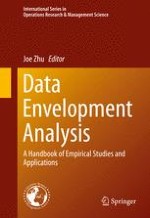2016 | OriginalPaper | Chapter
4. Social Cost Efficient Service Quality: Integrating Customer Valuation in Incentive Regulation—Evidence from the Case of Norway
Authors : Christian Growitsch, Tooraj Jamasb, Christine Müller, Matthias Wissner
Published in: Data Envelopment Analysis
Publisher: Springer US
Activate our intelligent search to find suitable subject content or patents.
Select sections of text to find matching patents with Artificial Intelligence. powered by
Select sections of text to find additional relevant content using AI-assisted search. powered by
